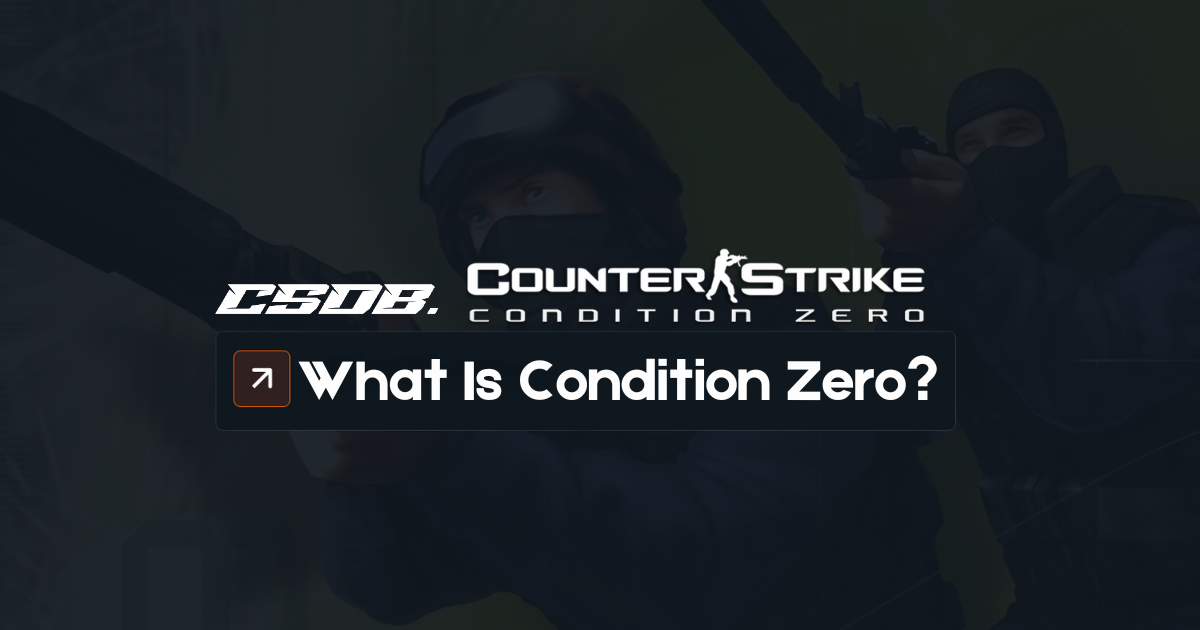Released in 2004, Counter-Strike: Condition Zero (CS:CZ) marked a significant step in the Counter-Strike franchise. Developed by a collaborative effort between Ritual Entertainment, Turtle Rock Studios, and Valve, it built upon the core gameplay of the original Counter-Strike while introducing new features and a focus on single-player experiences.
History and Development
Condition Zero was developed in many different steps. This complex development history resulted in several iterations of the game, each contributing distinct elements and features:
- Rogue Entertainment: Initially tasked with developing the game, Rogue Entertainment’s version was ultimately scrapped, but it set the foundation for the single-player campaign idea.
- Gearbox Software: Known for its work on the Half-Life expansions, Gearbox’s iteration was also discarded but they laid further groundwork for the game’s concept.
- Ritual Entertainment: Introduced the idea of a mission-based single-player campaign called “Deleted Scenes,” which was a substantial shift from the traditional multiplayer focus of Counter-Strike.
- Turtle Rock Studios: Finalized the game by integrating Ritual’s single-player content and enhancing the multiplayer experience. Their work led to the version of Condition Zero that was ultimately released.
The game utilizes the GoldSrc engine, offering familiar mechanics and weapon handling. Players choose from various weapons, including pistols, rifles, shotguns, and grenades, each with unique strengths and weaknesses. Strategic use of equipment and grenades is crucial for overcoming obstacles and gaining tactical advantages.
Single-Player Mode
Counter-Strike: Condition Zero introduced the single-player campaign concept in the franchise for the first time ever.
Tour of Duty: This campaign functioned as a narrative-driven series of missions linked across various multiplayer maps. Players progressed through a linear structure, completing objectives and challenges on each map to unlock the next. The objectives included defeating enemies, rescuing hostages, or achieving specific weapon feats. Tour of Duty provided a structured single-player experience within the familiar framework of Counter-Strike’s gameplay.
Condition Zero: Deleted Scenes: This campaign offered a collection of standalone missions separate from the Tour of Duty narrative. These missions were often more intricate and featured unique objectives or twists on classic Counter-Strike scenarios.
Multi-Player Mode
While CS:CZ introduced a single-player campaign, it didn’t abandon the series’ beloved multiplayer mode. This mode retained the core gameplay of Counter-Strike, featuring:
Updated Visuals: CS:CZ boasted improved character models, textures, and maps compared to the original. This visual upgrade enhanced the overall experience without straying too far from the established aesthetic.
Expanded Content: The game offered a wider selection of maps, both classic favorites and new additions, providing players with more tactical options and fresh environments.
Bot Integration: A significant addition was the inclusion of bots with varying difficulty levels. This allowed players to practice their skills, hone strategies, and enjoy the core gameplay even without a full online lobby.
CS:CZ received generally positive reviews upon release. Players appreciated the enhanced visuals, expanded content, and the innovative single-player campaigns. However, some criticism arose regarding the repetitiveness of the Tour of Duty structure and the lack of significant innovation in the core gameplay compared to the original Counter-Strike.
Despite these criticisms, CS:CZ carved its niche within the Counter-Strike franchise. It offered a bridge between the series’ focus on competitive multiplayer and the growing popularity of narrative-driven single-player FPS experiences. The game’s legacy is evident in its continued presence on Steam, where it maintains a “Very Positive” user rating.
These days though, the focus on Counter-Strike lies within its online multiplayer, making the solo campaigns a thing of the past.


